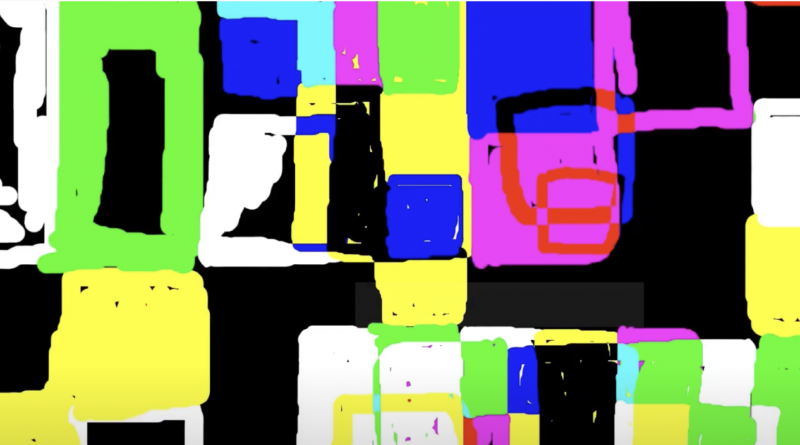The Social Nature of Information
The Social Nature of Information
Jenna Hartel
This, my third posting to Information Matters’ multimedia page, explores the social nature of information through three videos from my YouTube channel, INFIDEOS.
More than ever, Information Science is attempting to understand how information is socially-constructed, that is, formulated in coordination with others rather than separately by each individual. From the thirteen “metatheories” operating across Information Science today (Bates, 2005), the historical, socio-cognitive, social constructionist, ethnographic, and critical metatheories orient research into the social nature of information, each with its own goals, logic, and tenets. The videos that follow in no way present comprehensive statements on such multiplex matters. Rather, they are visually inviting glimpses or portals into the topic.
First up is a Tiny Video that introduces the French information scientist, Suzanne Briet (1894-1989). Briet was a teacher-turned-librarian at the Bibliothèque Nationale in Paris. From the 1920s onward, she was active nationally and internationally in the development of Information Science (then called Documentation) at the levels of its theory, practice, and education. In addition to innovations that vastly increased access to bibliographies, Briet wrote a short pamphlet called What is Documentation? (1951/2006). In contrast to the dominant scientific and positivist views on information then in fashion, Briet’s manifesto had more humanistic, literary, and semiotic inflections and enlarged the mandate of Information Science beyond its stronghold of conventional print materials. To this end, Briet was famous for asking, “Is an antelope a document?” The question is answered swiftly in the Tiny Video! To learn more about this visionary information scientist and her more culturally tuned approaches, see writings by Mary Niles Maack (2004) and Ron Day (2006), as well as an online compilation about Briet by Michael Buckland (n.d.).
My own research into information in the hobby of gourmet cooking (Hartel, 2010) provides another view of the social construction of information, this time, empirically generated from ethnographic research on documents. As I collected and analyzed culinary information from across the last century, I noticed that the recipe has changed much over time. But why? In the early 1900s recipes offered short and loose guidelines for food preparation, as in the Apple Pie example show below. By the early 2000s the recipe had become an extremely detailed, sprawling, and even inspiring set of technical instructions that in its online form is an ongoing conversation within the cooking social world. I bring this informational story of the recipe to life in “The Dance Between Information and Culture,” which is a segment within a longer video (that you are welcome to watch in its entirety). In short, the information in a recipe is changing—dancing—with social and cultural developments related to work and leisure time, domestic practices, gender roles, culinary trends, as well as health and nutrition discoveries. This video snippet could serve as inspiration for students of Information Science to trace the dynamics between any information form and its socio-cultural context. Adopting Briet’s spacious outlook on documents, we can ask, What is the informational dance of the greeting card? The airline ticket? The tattoo? Sheet music? Grafitti? And how about the book?

Bringing this multimedia collage about information and society to a close is a Tiny Video that salutes the work of Cheryl Metoyer Duran (now Metoyer), an indigenous scholar of information behavior. Metoyer’s research in the late 1980s focused upon information inequity in the United States. Through fieldwork she documented the information behaviors of ethnolinguistic minorities in greater Los Angeles, with particular attention to gatekeepers, that is, the expert mediators who help to disseminate information between a majority and minority linguistic community. Metoyer-Duran’s 1991 paper outlines an intricate typological model of six different kinds of gatekeepers, each prone to distinct information behaviors. This was one of the first empirical studies of an everyday life context to gather nuanced insights into culturally-based informational patterns. As a video-maker, I can attest that Metoyer-Duran’s project was one of the most challenging to condense into a Tiny Video, given its richness.
At a glance, antelopes, recipes, and ethnolinguistic gatekeepers may not appear to have much in common. Hopefully, watching the three videos, in turn, shows that they all enact the dance between information and society.
—Very soon, coming to an Information Matters “theater” near you, is an information-inspired Valentine.—
References
Bates, M. J. (2005). An introduction to metatheories, theories, and models. In K. E. Fisher, S. Erdelez, & L. McKechnie (Eds.), Theories of information behavior (pp. 1–24). Medford, NJ: American Society for Information Science and Technology.
Briet, S. (2006). What is Documentation?: English Translation of the Classic French Text (R. E. Day, L. Martinet & H. G. B. Anghelescu, Trans.; ed., R.E. Day and L. Martinet) Lanham, MD: Scarecrow.
Day, Ronald. (2006). “Preface.” In What is Documentation?: English Translation of the Classic French Text. R. E. Day, L. Martinet & H. G. B. Anghelescu, Trans.; ed., R.E. Day and L. Martinet. Lanham, MD: Scarecrow, p. v.
Hartel, J. (2010). Managing documents at home for serious leisure: a case study of the hobby of gourmet cooking. Journal of Documentation, 66(6), 847–874.
Buckland, M. https://people.ischool.berkeley.edu/~buckland/briet.html
Maack, M.N. (2004). The lady and the antelope: Suzanne Briet’s contribution to the French documentation movement. Library Trends, 52(4), 719–.
Metoyer-Duran, C. (1991). Information-seeking behavior of gatekeepers in ethnolinguistic communities: Overview of a taxonomy. Library and Information Science Research, 13(4): 319–46.
Cite this article in APA as: Hartel, J. (2022, February 2). The social nature of information. Information Matters. Vol.2, Issue 2. https://r7q.22f.myftpupload.com/2022/02/the-social-nature-of-information/
Author
-

I am an Associate Professor at the Faculty of Information, University of Toronto. As an interdisciplinary social scientist devoted to the field of Library and Information Science (LIS), I conduct research in three related areas: 1) information and the "higher things in life" that are pleasurable and profound; 2) visual and creative research methods; and 3) the history and theory of LIS. In the Master of Information program at the Faculty of Information, I mostly teach graduate students in the Library and Information Science concentration. Both my research and teaching aim to be an imaginative forms of intervention in the field of LIS, through unorthodox projects such as Metatheoretical Snowman, Welcome to Library and Information Science, and the iSquare Research Program. See my website at jennahartel.info or my YouTube Channel, INFideos.
View all posts





